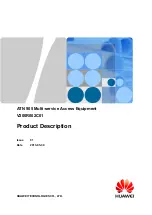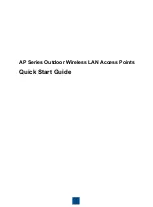
C H A P T E R
5
Configuring and Deploying the Access Point
This section describes how to connect the AP to a controller. For instructions on how to configure the AP,
see the
Cisco Wireless Controller Configuration Guide
for the relevant release.
•
The Controller Discovery Process, on page 23
•
Deploying the Access Point on the Wireless Network, on page 24
•
Checking the Access Point LEDs, on page 24
The Controller Discovery Process
To support the CW9166I AP, the controller must be running Cisco IOS XE Cupertino 17.9.1 or a later release.
For more information, see the
Cisco Catalyst 9166 Series Access Points Data Sheet
Guidelines and Limitations
• It is not possible to edit or query an access point using the controller CLI if the name of the access point
contains a space.
• Make sure that the controller is set to the current time. If the controller is set to a time that has already
occurred, the access point might not join the controller because its certificate may not be valid for that
time.
The AP must discover the controller before it can become an active part of the network. The AP supports the
following controller discovery processes:
• Locally stored controller IP address discovery: If the access point was previously joined to a controller,
the IP addresses of the primary, secondary, and tertiary controllers are stored in the access point's
nonvolatile memory. This process of storing controller IP addresses on an access point for later deployment
is called priming the access point. For more information about priming, see
Configuration (Optional), on page 17
.
• DHCP server discovery: This feature uses DHCP Option 43 to provide controller IP addresses to the
access points. Cisco switches support a DHCP server option that is typically used for this capability. For
more information about DHCP Option 43, see
Configuring DHCP Option 43, on page 29
• DNS discovery: The access point can discover controllers through your domain name server (DNS). For
the access point to do so, you must configure your DNS to return controller IP addresses in response to
CISCO-CAPWAP-CONTROLLER.localdomain, where localdomain is the access point domain name.
Configuring the CISCO-CAPWAP-CONTROLLER provides backwards compatibility in an existing
Cisco Catalyst 9166 Series Wi-Fi 6E Access Point Hardware Installation Guide
23
















































